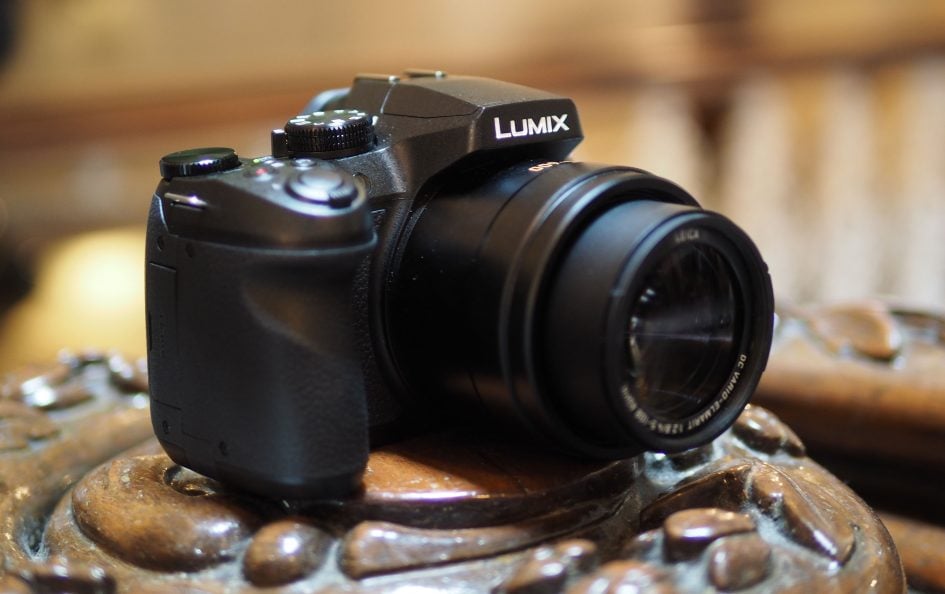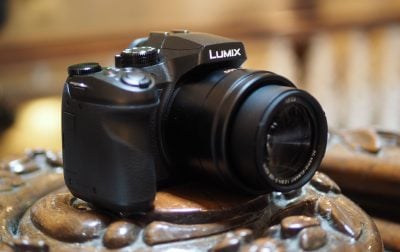Panasonic Lumix FZ330 / FZ300 review
-
-
Written by Ken McMahon
Verdict
The Lumix FZ330 / FZ300 updates the three year old Lumix FZ200 retaining the older model’s constant aperture 24x / f2.8 lens and 12 Megapixel MOS sensor. The Venus processor is updated along with a much bigger and more detailed viewfinder and a higher resolution screen. The viewfinder now has an eye sensor to automatically switch it on when required and the body has been sealed to provide protection from moisture and dust.
Other upgrades include bigger control and mode dials, a second thumb-operated control dial on the lens barrel, and repositioning of some of the controls.
Beyond the exterior changes the new model now supports 4k video and along with it the 4k burst shooting modes that provide 30fps shooting at 8 Megapixel resolution. These have been recently augmented with a firmware update that adds a Post Focus mode allowing you to select the focus point in an image (or to be precise, a short 4k video clip) after shooting and export an 8 Megapixel JPEG.
These all add up to a significant upgrade over the earlier model and so it should, after all, we’ve had to wait three years for it, a long time in the digital camera world. There’s no question that the FZ330 / FZ300 will be an attractive proposition for anyone who has been using an FZ200, or for that matter any other bridge super-zoom, for the past three years. Read on to find out more about what it has to offer and how it compares with the more expensive Sony RX10 II.

If we’re going to be comparing the Sony RX10 II and Lumix FZ330 / FZ300 the first issue we need to deal with is the difference in the zoom range. This is easier than you might think, either a long telephoto is important to you, or it isn’t. There’s no question the FZ330 / FZ300 will get you a lot closer to the action than the RX10 II, but you need to ask yourself how often you take those kinds of pictures. For many, the RX10 II’s 200mm equivalent will be good enough, and you can also crop a little into the Sony’s 20 Megapixel images to match the 12 from the Lumix.
Both these models have a constant f2.8 focal ratio, but the RX10 II’s larger 1 inch sensor means it’s possible to achieve shallower depth of field effects compared with the FZ330 / FZ300 at the same focal length and distance from the subject. But if it’s shallow depth of field you want, you can get that by zooming the Lumix further – all the way to 600mm equivalent on the FZ330 / FZ300. But there’s no getting round the fact the RX10 II’s larger sensor delivers better quality images with more detail and significantly lower noise levels at high ISOs than the Lumix FZ330 / FZ300.
The RX10 II’s metal-bodied construction feels more robust than the Lumix FZ330 / FZ300, but both models are dust and splash proof . Though the RX10 II is the smaller of the two its extra weight could prove a bit of a liability if you’re carrying it around all day. The FZ330 / FZ300 has more programmable function buttons and provides greater scope for customisation, against that the RX10 can offer a clickable lens ring marked with aperture stops and a dedicated exposure compensation dial.
The RX10 II has a bigger brighter viewfinder and its screen is higher resolution, but it only folds up and down versus the more flexible and touch-sensitive, though less detailed side-hinged screen on the FZ330 / FZ300. Plus the RX10 II provides an SLR-style LCD info panel.
Both models support 4k UHD video, but the FZ330 / FZ300 leverages that with a range of 4k shooting modes including the latest innovation – Post Focus – allowing you to set the focus after taking the shot. The RX10 II is no slouch when it comes to burst shooting though, with a claimed 14fps in Speed priority continuous mode. It also outperforms the FZ330 / FZ300 with a range of high frame rate (slow motion) video modes topping out at 1000fps corresponding to a 40x slow down.
There’s not much to choose between them when it comes to Wifi features, except to say that the RX10 has the advantage of NFC for hassle-free connections with your smartphone and also supports downloadable apps for adding new and improved features.
The biggest difference though is the cost, with the RX10 II carrying a price tag around double that of the FZ330 / FZ300. If you’ve got the money you’ll get a more pro-focused camera with superior handling that produces visibly better quality images, especially in low light. About the only downside is the comparatively limited zoom range. See my Sony RX10 II review for more details. If on the other hand you decide to save yourself some money you’re unlikely to be disappointed with the Lumix FZ330 / FZ300. You’ll have to look very hard to find a compact bridge super-zoom with a 1/2.3in sensor that produces better quality photos and offers similar specifications and features. That’s reason enough to earn it a Cameralabs Highly Recommended award.
One final thing; If you yearn for the better quality of the Sony RX10 II, but lack the budget, or otherwise prefer what the Lumix FZ330 / FZ300 has to offer, consider the 16x Lumix FZ1000 which, like the RX10 II has a 1 inch 20 Megapixel sensor (albeit the previous generation used in the original Sony RX10). Its 25-400mm f2.8-f4 zoom lacks the FZ330 / FZ300’s reach and constant aperture, though at f4 at the 400mm end it’s still fairly bright. It also shares the FZ330 / FZ300’s 4k 25/30p UHD video modes (including 4k photo but not post focus yet), and thanks to gradual discounting since launch now costs only around 20% more than the FZ330 / FZ300. As such the FZ1000 is an ideal super-zoom for someone who wants a bigger sensor but doesn’t need the higher-end pro features of the RX10 series. See my Lumix FZ1000 review for more details.




